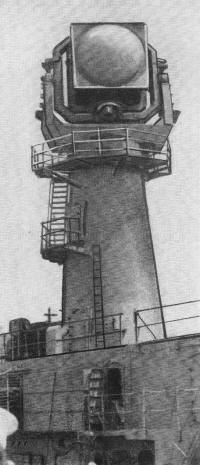July 1957 Radio & TV News
 [Table
of Contents] [Table
of Contents]
Wax nostalgic about and learn from the history of early
electronics. See articles from
Radio & Television News, published 1919-1959. All copyrights hereby
acknowledged.
|
The term "super-radar" would be sort
of meaningless these days since just about everything is "super" anymore, especially
with regard to military, space, or aerospace systems. Not so in 1957 when this
Radio & TV News magazine article appeared. Lately, when I hear the
term "super-something," I think of a really funny radio commercial with a meeting
of super-geniuses. I don't recall the exact subjects, but the chairman asks his
members for items to add to their agenda of things to do. Someone pipes up with
an idea to solve world hunger, then another suggests they design a nuclear fusion
generator to power the world with clean energy, etc. Enthusiasm exudes from the
empaneled super geniuses. Finally, someone suggests that they do whatever it is
the commercial is trying to promote (I don't remember what it is), upon which silence
falls over the room and an incredulous person says, "We're super geniuses, but we're
not super super geniuses." Then, of course, the commercial goes on to explain that
ABC Company has a solution to the problem and that you need to buy it.
Super-Radars for Missile Ship
 Long-secret radar now in active service
with the fleet for guidance of its deadly Terrier missiles. Long-secret radar now in active service
with the fleet for guidance of its deadly Terrier missiles.
Long-secret class of super-radars, now in service with the fleet for guidance
of its Terrier missiles, was revealed recently by the Navy.
Subject of speculation since first displayed aboard the guided missile cruiser
"USS Canberra," massive, turret-like antennas for the new radars have radically
changed the contours of the nation's fighting ships. Although the radar antennas,
which resemble gigantic searchlights, attracted considerable attention during President
Eisenhower's recent trip on the Terrier-equipped "Canberra," the structures were
identified only recently. Only limited, general information regarding the new
AN/SPQ-5 radars has been released.
Developed for the Navy by Sperry Gyroscope Company, of Great Neck, N. Y., the
long-range, high-altitude missile guidance radar systems came into fleet use only
after years of successful tests.
Rear Admiral F. S. Withington, chief of Navy's Bureau of Ordnance, said that
the new super-radars were a part of the Navy's program directed toward providing
the fleet with highly reliable missiles to combat supersonic jet aircraft. "Our
new radar systems," he said, "are giving exceptionally high performance for tenacious,
stable guidance of supersonic missiles, whether fired singly or in salvoes at individual
or multiple enemy attackers." He confirmed that the two SPQ-5 systems aboard the
"Canberra" combine many automatic radar functions in each unit. Either system can
control the missiles from a single launcher or battery, which fires the Terrier
missile, or both radars can track different target groups simultaneously.
 The SPQ-5 radar systems include flexible
modes of scanning the air space many miles beyond the horizon, providing the advantage
of early warning. Individual targets can be selected from close-flying groups and
tracked at great distances while the missiles are launched and guided with "extreme
accuracy." The SPQ-5 radar systems include flexible
modes of scanning the air space many miles beyond the horizon, providing the advantage
of early warning. Individual targets can be selected from close-flying groups and
tracked at great distances while the missiles are launched and guided with "extreme
accuracy."
Concurrently, Sperry announced that a new manufacturing facility at Charlottesville,
Virginia, The Sperry Piedmont Company, is producing the super-radars for the Navy.
Completed in October, 1956, the new $2 million plant includes special facilities
to accommodate the massive radar antenna "barbettes" used aboard ship.
Two cruisers, the "USS Boston" and the "USS Canberra," have been converted to
Terrier-equipped missile ships and have joined the fleet. The "USS Topeka," the
"Providence," and the "Springfield" now are being converted to carry the missile.
The photo at top right is a blown-up view of one of the radar turrets.
Posted December 1, 2021
(updated from original post on 1/30/2014)
|










